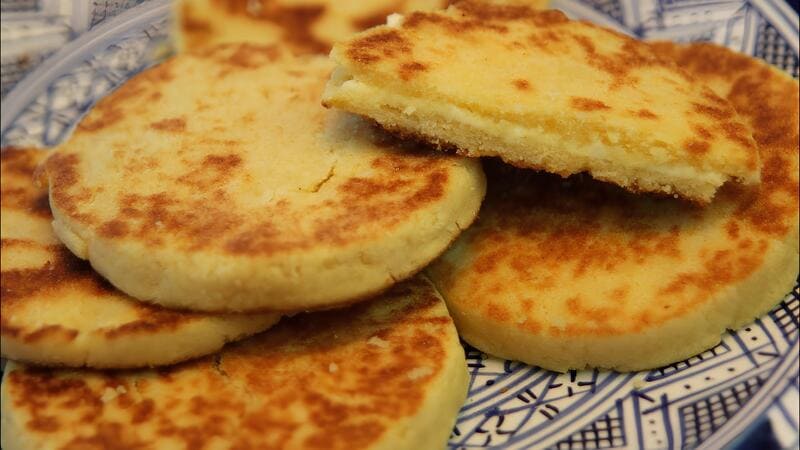
Harcha is a beloved semolina bread from Morocco, often enjoyed during breakfast or as a snack with tea. Its unique texture comes from using fine semolina, which gives it a gritty yet soft mouthfeel. While Moroccan in origin, its versatility makes it a favorite across North African countries, including Egypt.
This bread is especially loved for its simple preparation and delicious flavor, making it a healthy and satisfying choice for many. Traditionally, harcha is lightly sweetened, but you can easily modify it with savory fillings or toppings. Whether you prefer it plain or with additions, harcha remains an easy, traditional recipe that captures the essence of Moroccan and Egyptian culinary traditions.
Ingredients
- 500 grams fine semolina
- 7 grams dry yeast
- 80 milliliters oil (mix of vegetable oil and butter)
- 1 teaspoon salt
- 1 teaspoon sugar
- 250 milliliters warm water
- Extra semolina for dusting
Preparation
- In a large mixing bowl, combine 500 grams of fine semolina, 7 grams of dry yeast, 1 teaspoon of salt, and 1 teaspoon of sugar.
- Add 80 milliliters of oil (a mix of vegetable oil and butter) to the dry ingredients and mix well until fully incorporated.
- Gradually add 250 milliliters of warm water, stirring continuously to form a soft dough.
- Cover the bowl with a cloth and let the dough rest for 30 minutes to allow the yeast to activate.
- Dust your hands with semolina and divide the dough into small balls.
- Heat a heavy frying pan over medium heat.
- Flatten each dough ball slightly and dust it with extra semolina.
- Cook each piece in the frying pan until golden brown and crispy on both sides, about 4-5 minutes per side.
- Remove from heat and let cool slightly before serving.
Did you know?
Harcha is often enjoyed with honey and butter, a flavor profile that complements its mild, slightly sweet taste. This bread dates back centuries and has been a staple in Moroccan households, passed down through generations. The key ingredient, semolina, is a coarse flour made from durum wheat, which is also used for making couscous and pasta.
Interestingly, harcha can also be made in various shapes and sizes, from small snack-sized pieces to larger loaves. In some regions, it’s cooked on a griddle, imparting a slightly different texture. It’s also adaptable to your dietary preferences—whether you’re looking for a gluten-free option or a vegan version, the basic recipe can be easily tweaked.
Harcha’s best companion is often Moroccan mint tea, providing a refreshing contrast to its hearty texture. It’s also worth noting that this bread is not just limited to Moroccan cuisine; its influence extends to Egyptian culinary practices, showcasing the shared love for traditional semolina-based recipes.
